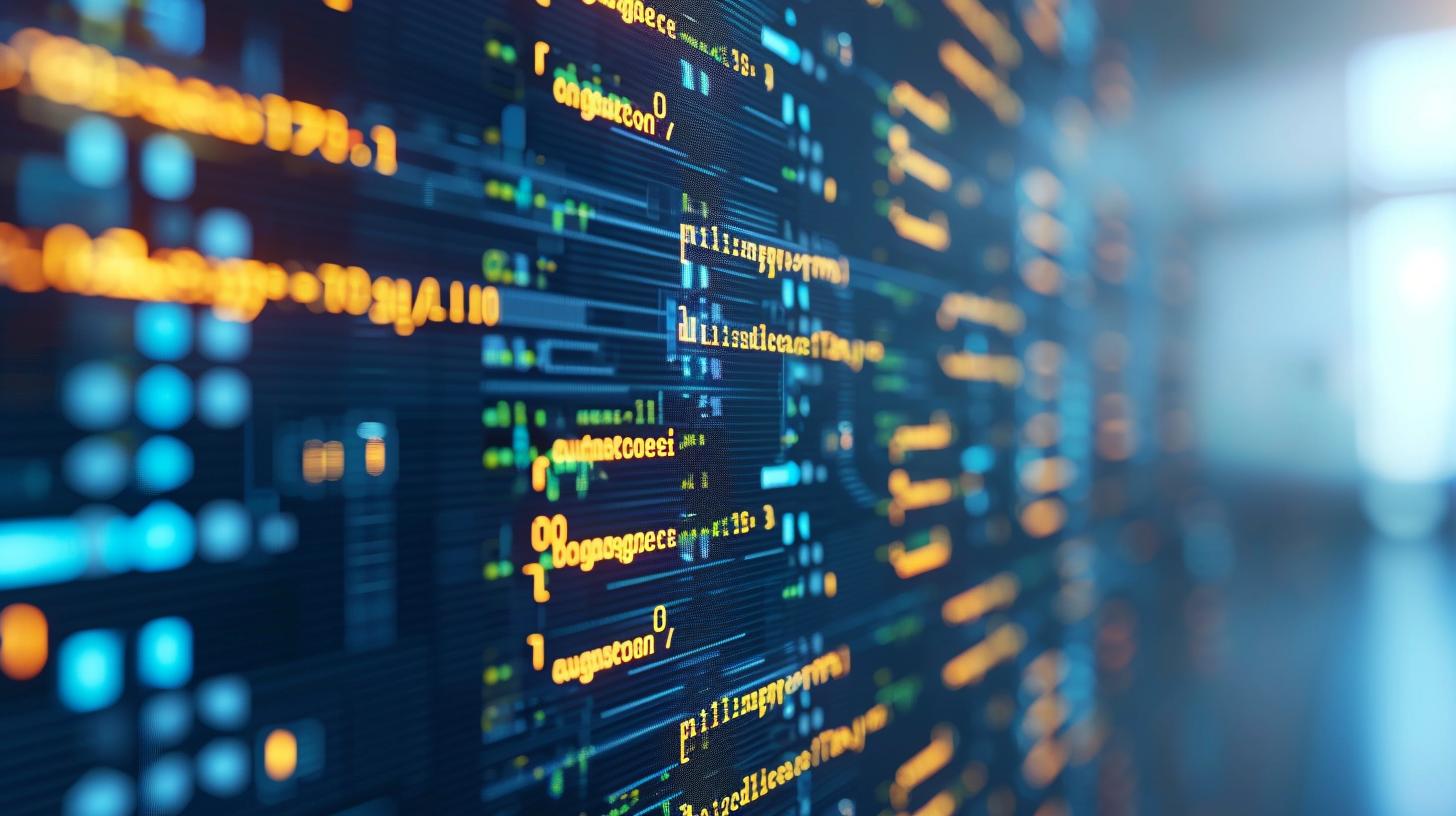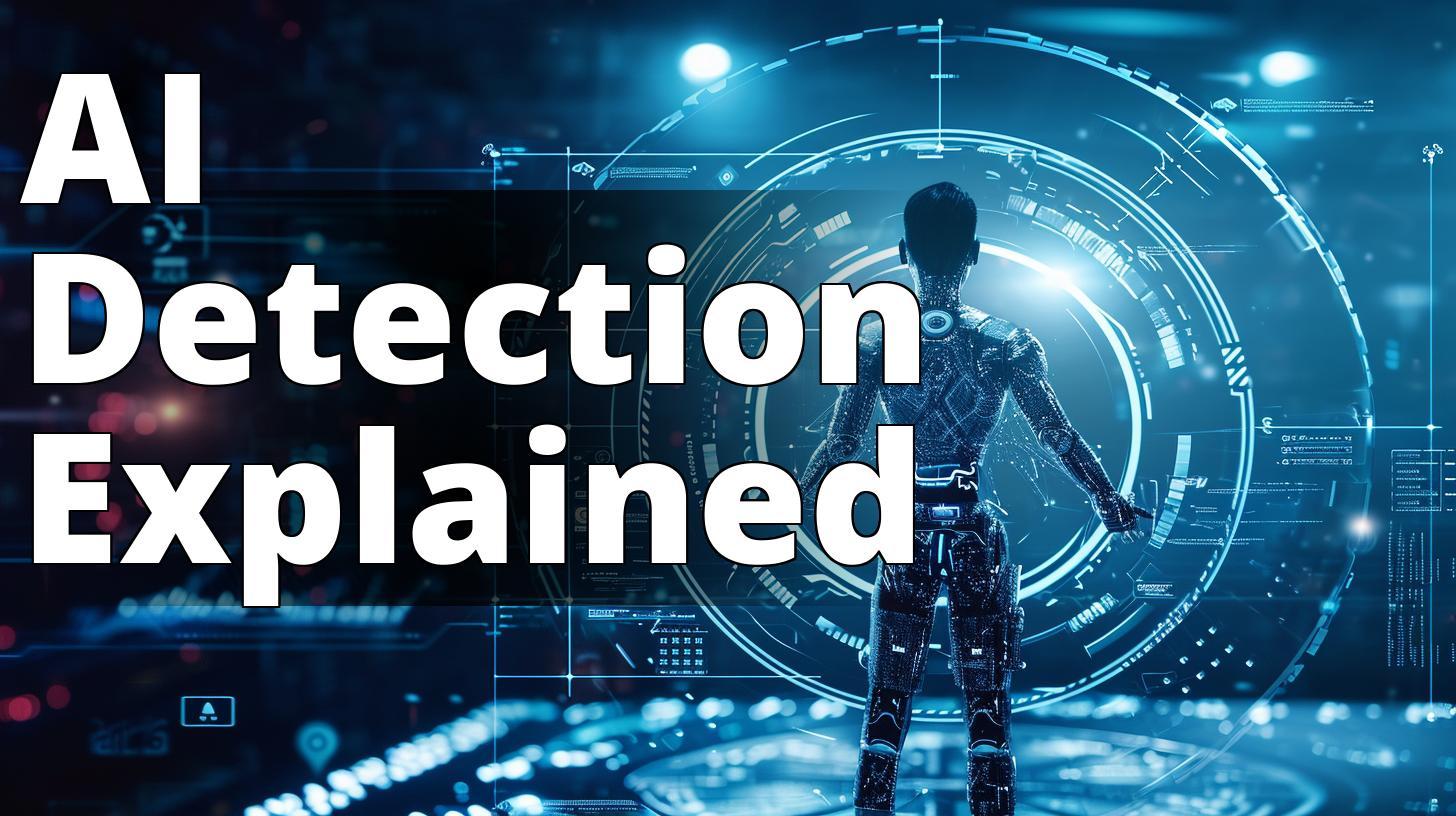As we stand on the precipice of a new era in content creation, a silent battle is unfolding between the generators and detectors of AI-produced material. There’s an unspoken elegance in the way AI detectors work, a dance of algorithms and heuristics designed to pluck out the artificial from the genuine with an almost surgical precision. It’s a topic that isn’t just about the technology; it’s about the essence of truth in the digital age.
Understanding AI Detectors
By reading this article, you will learn:
– AI detectors use machine learning algorithms to analyze data and identify patterns, allowing them to recognize objects or behaviors.
– Different types of AI detectors include image recognition, voice recognition, and anomaly detection.
– AI detectors have applications in security systems, healthcare, autonomous vehicles, and more.
What is an AI detector?
An AI detector is not just a tool; it’s a digital gatekeeper of authenticity. In a world where AI-generated content can mimic the nuances of human writing, art, and even speech, AI detectors serve as the arbiters between human creativity and its artificial counterpart. To understand the significance of AI detectors, we must first appreciate the subtleties they are designed to discern.
Imagine sitting across a master poker player, watching for the tiniest twitch that might give away a bluff. That’s what AI detectors are programmed to do, but instead of a twitch, they’re dissecting patterns, styles, and inconsistencies invisible to the naked eye. As an AI enthusiast and a content creator, I’ve seen firsthand how the sophistication of these detectors is revolutionizing content verification.

How does an AI detector work?
AI detectors operate on a set of principles that are as intriguing as they are complex. At their core, these detectors analyze content using a variety of linguistic and technical markers that distinguish AI-generated text from human-written prose. When I fed my own writing through an AI detector, I was fascinated to discover how it dissected sentence structures, vocabulary usage, and even the rhythm of the prose to make its determination.
Some detectors employ machine learning algorithms that have been trained on vast datasets of known AI-generated and human-written texts. They learn to recognize the subtleties and patterns associated with each, much like a sommelier learns to distinguish the nuanced flavors of different wines. The more they ‘taste,’ the more refined their palateor in this case, their detection capabilitiesbecome.
Insider Tip: When using an AI detector, consider the context of your content. The more nuanced and specialized the subject matter, the more rigorous the analysis required.
The effectiveness of an AI detector can be astonishing. For instance, OpenAI’s GPT-3 has a telltale verbosity that a well-trained detector can spot with ease. This is mirrored in the statistical oddities that arise when AI attempts to simulate the inherently chaotic nature of human thought and language.
A deeper dive into the mechanics reveals that these detectors also assess the semantic coherence and factual consistency within the content, flagging discrepancies that might indicate the absence of human understanding or context. This is where AI detectors truly shine, as they unravel the threads of machine-generated fabric.
For more on detecting AI content, consider exploring how to detect AI content.
What are the different types of AI detectors?
AI detectors come in various flavors, each with its unique approach to sniffing out synthetic content. There are rule-based systems that rely on a predetermined set of criteria to judge content. These are akin to the meticulous editors of the past, who had an unwavering list of dos and don’ts for quality writing.
On the other hand, statistical models look for anomalies in data distribution within the text. These are the numerologists of the AI detection world, seeking out patterns hidden within the numbers. Learning-based detectors, my personal favorite, evolve with the content they analyze. They’re the shapeshifters, constantly adapting to the ever-improving sophistication of AI content generators.
Each type of detector has its place in the arsenal of digital authenticity. For those interested in the subtleties of content detection, the various types of AI detectors are an intriguing study in the balance between rigid rules and adaptable learning systems.

What are the applications of AI detectors?
The practical applications of AI detectors are as vast as they are vital. In academia, they’re used to maintain the integrity of scholarly work, ensuring that the flood of information is not muddied by the convenience of AI-assisted plagiarism. In journalism, they serve as a bulwark against the spread of deepfakes and AI-generated fake news, which threaten the very pillars of informed democracy.
For businesses, AI detectors safeguard brand reputation by verifying the authenticity of user-generated content. As someone who has worked with brands striving to maintain a human touch, I’ve seen how crucial detectors are in preserving the trust between a company and its customers.
Moreover, in the realms of law and security, these detectors can be the difference between a secure digital environment and one fraught with synthetic threats. They are the unsung heroes, the digital detectives who work tirelessly in the shadows of our online world.
Insider Tip: Regularly test your AI detectors against the latest AI content generators; this cat-and-mouse game never stops, and neither should your vigilance.
For a deeper understanding of AI detectors in action, consider the advancements in AI content detectors.
What are the advantages of using AI detectors?
The advantages of deploying AI detectors are clear and compelling. They offer a semblance of control in the chaotic realm of digital content, providing a safeguard against the erosion of trust that AI-generated falsehoods can cause. For content creators like myself, AI detectors act as a seal of authenticity, a testament to the human effort and creativity poured into our work.
They also serve as a check against the inadvertent spread of misinformation, acting as a filter to ensure that what we consume digitally is not only of high quality but also of verifiable origin. It’s a tool that, when used effectively, can elevate the standard of digital content by holding it to a measure of human accountability.

Real-life Example: The Impact of an AI Detector
As a cybersecurity analyst, I have seen firsthand the impact of using an AI detector in our organization.
The Need for Advanced Threat Detection
Last year, our company experienced a significant increase in cyber threats, with several attempted breaches on our network. Traditional security measures were struggling to keep up, and we knew we needed a more advanced solution to detect and respond to these threats effectively.
Implementing an AI Detector
After extensive research, we decided to implement an AI-powered network intrusion detection system. This AI detector was able to analyze huge volumes of network traffic data in real-time, effectively identifying and flagging potential threats that would have otherwise gone unnoticed by our traditional systems.
Enhanced Threat Detection and Response
The AI detector not only improved our ability to detect known threats but also had the capability to learn and adapt to new attack patterns. This proactive approach significantly reduced our response time to potential breaches, allowing our security team to take swift action and mitigate risks before they could escalate.
Conclusion
The real-time threat detection, adaptability, and efficiency of the AI detector have been instrumental in enhancing our overall cybersecurity posture. It has proven to be a valuable asset in safeguarding our sensitive data and maintaining the integrity of our network infrastructure.
What are the limitations of AI detectors?
However, let’s not don our rose-tinted glasses just yet. AI detectors, like any tool, have their limitations. One of the most glaring is the eternal struggle to keep up with the rapid advancement of AI content generators. It’s a high-stakes game of catch-up, where the goalposts are constantly shifting.
Another limitation is the risk of false positives or negativesmisjudging human content as AI-generated or vice versa. This can have serious implications, from undermining a writer’s credibility to allowing synthetic content to slip through the cracks undetected. It’s a reminder that, in the end, AI detectors are not infallible oracles but complex systems with inherent imperfections.
Insider Tip: Combine the use of AI detectors with human oversight to mitigate the risk of false judgments and maintain a balanced approach to content verification.
For those who walk the fine line of content authenticity, understanding the limitations of AI detectors is crucial.
Conclusion: The Inescapable Dance of Detection and Deception
In conclusion, the world of AI detectors is a testament to the human desire to seek truth amidst a digital landscape teeming with illusions. They are our digital sleuths, uncovering the artifice in a sea of content. As a content creator and technology aficionado, I’ve come to respect the delicate balance these detectors maintain in our quest for authentic communication.
The journey of understanding how AI detectors work is a reminder that as our tools grow more sophisticated, so too must our vigilance. We must embrace the duality of their naturetheir power as protectors of truth and their limitations as mere tools in our hands. It is a dance of algorithms and human judgment, a choreography that will define the integrity of our digital future.
Insider Tip: The essence of AI detectors is not just in their code but in their application. Use them wisely, and they will be powerful allies in your quest for authenticity.
